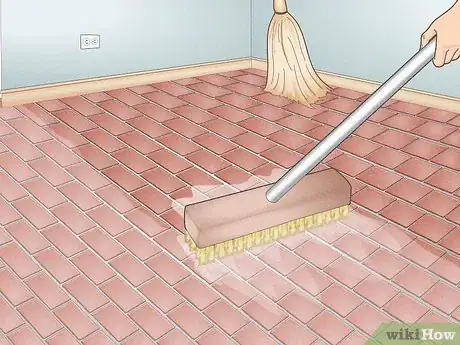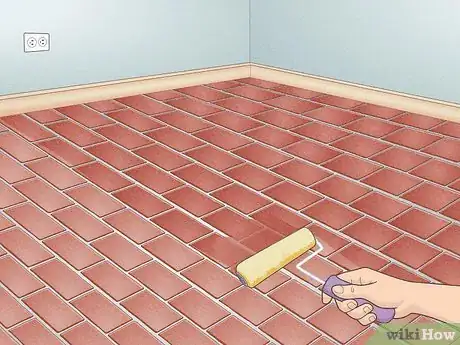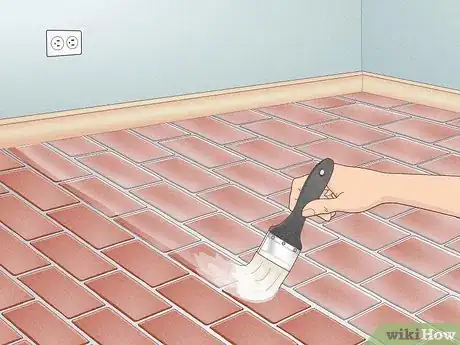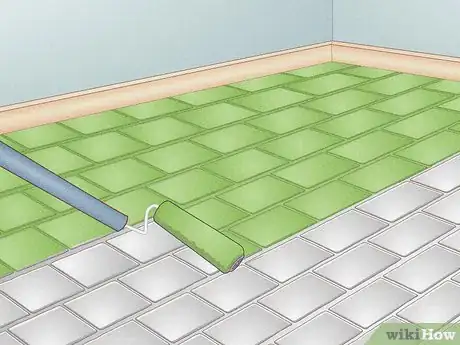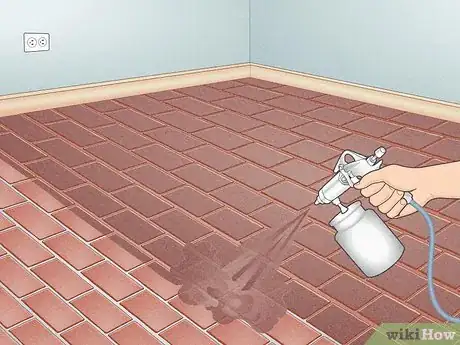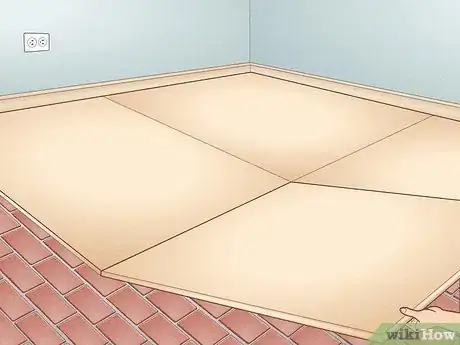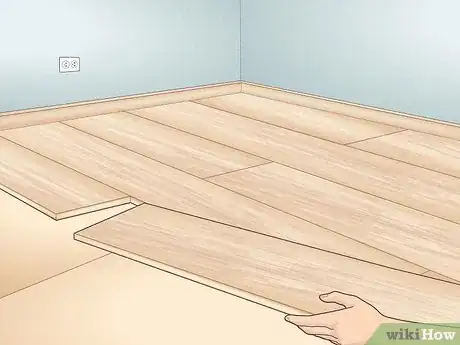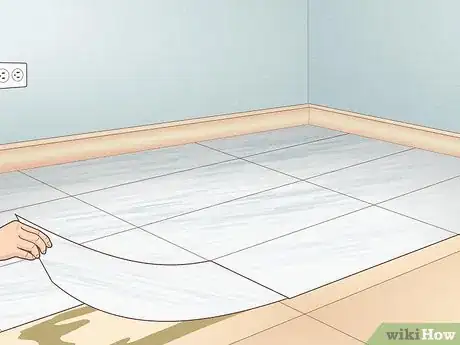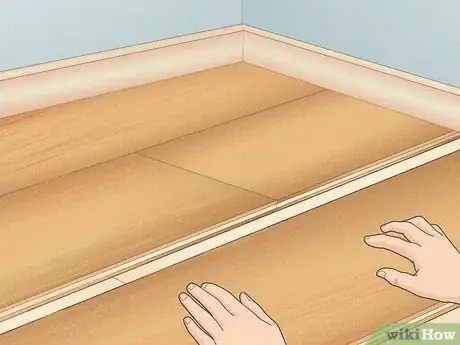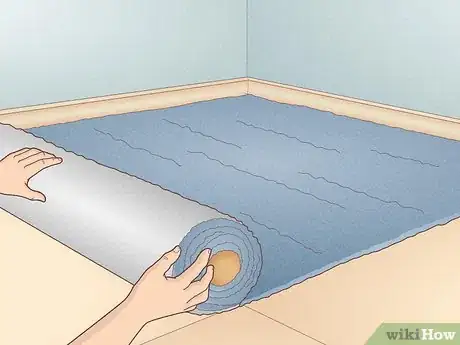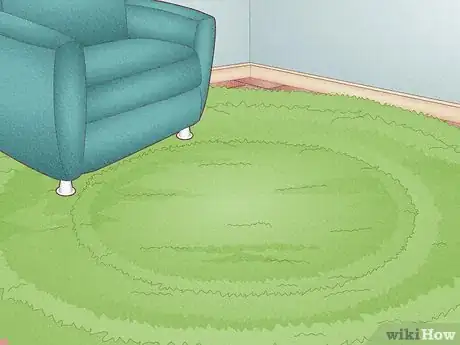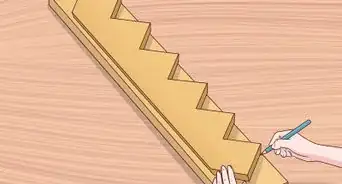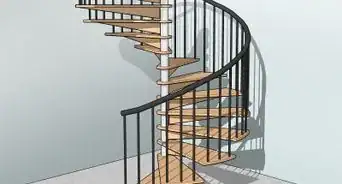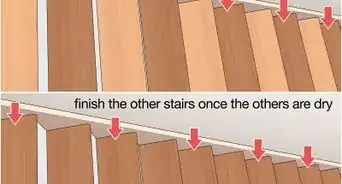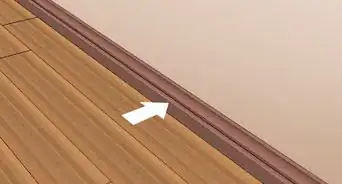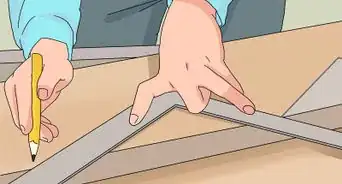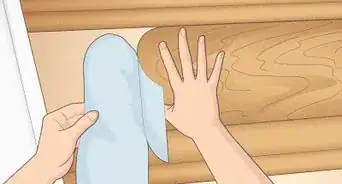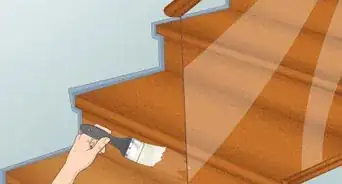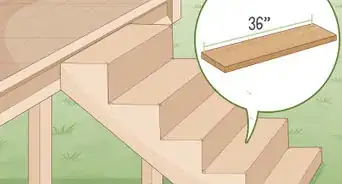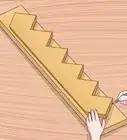This article was co-authored by wikiHow staff writer, Amy Bobinger. Amy Bobinger has been a writer and editor at wikiHow since 2017. She especially enjoys writing articles that help people overcome interpersonal hurdles but frequently covers a variety of subjects, including health and wellness, spirituality, gardening, and more. Amy graduated with a B.A. in English Lit from Mississippi College in 2011 and now lives in her hometown with her husband and two young sons.
There are 14 references cited in this article, which can be found at the bottom of the page.
This article has been viewed 16,088 times.
Learn more...
Brick floors are a cool architectural feature, but their distinctive look may not necessarily go with all decorating styles. On top of that, bricks are uneven and hard under your feet. If you have brick floors and you want to try another option but don't want to go to the trouble of pulling the whole floor up, don't worry! We have tons of options for you to choose from.
Steps
Expert Q&A
-
QuestionWhat are some tips for installing laminate flooring?
 Jacob PischerJacob Pischer is a Home Improvement Specialist and the Owner of Helpful Badger, a home repair service in Portland, OR. With over four years of experience, Jacob specializes in a variety of handyman services including pressure washing, cleaning gutters, repairing drywall, fixing leaky plumbing fixtures, and repairing broken doors. Jacob studied at Madison Area Technical College and has a background in real estate investment.
Jacob PischerJacob Pischer is a Home Improvement Specialist and the Owner of Helpful Badger, a home repair service in Portland, OR. With over four years of experience, Jacob specializes in a variety of handyman services including pressure washing, cleaning gutters, repairing drywall, fixing leaky plumbing fixtures, and repairing broken doors. Jacob studied at Madison Area Technical College and has a background in real estate investment.
Home Improvement Specialist Remember that a room is never square. Houses settle and move, so make sure you are taking measurements all the way through the project in order. The hardest part is getting your floor to line up against cabinets and under your fridge and all of that.
Remember that a room is never square. Houses settle and move, so make sure you are taking measurements all the way through the project in order. The hardest part is getting your floor to line up against cabinets and under your fridge and all of that.
References
- ↑ https://www.thisoldhouse.com/masonry/21016128/how-to-clean-brick-with-acid
- ↑ https://homesteady.com/13416072/polyurethane-on-brick-floors
- ↑ https://www.architecturaldigest.com/story/how-to-paint-brick
- ↑ https://www.homeflooringpros.com/brick-flooring/
- ↑ https://www.bobvila.com/articles/how-to-whitewash-brick/
- ↑ https://www.architecturaldigest.com/story/how-to-paint-brick
- ↑ https://www.bobvila.com/articles/how-to-paint-brick/
- ↑ https://www.houzz.in/magazine/how-to-cover-up-ugly-floors-without-retiling-stsetivw-vs~114540148
- ↑ https://www.thisoldhouse.com/painting/22740402/staining-brick
- ↑ https://parryscarpets.com.au/can-laminate-be-installed-on-top-of-an-existing-floor/
- ↑ https://www.thisoldhouse.com/flooring/22178021/diy-laminate-flooring-install
- ↑ https://www.houzz.in/magazine/how-to-cover-up-ugly-floors-without-retiling-stsetivw-vs~114540148
- ↑ https://homesteady.com/how-12156335-install-vinyl-sheet-flooring-doublesided-tape.html
- ↑ https://www.thisoldhouse.com/flooring/21016386/how-to-install-a-floating-engineered-wood-floor
- ↑ https://www.bobvila.com/articles/how-to-install-carpet/
- ↑ https://www.houzz.in/magazine/how-to-cover-up-ugly-floors-without-retiling-stsetivw-vs~114540148
